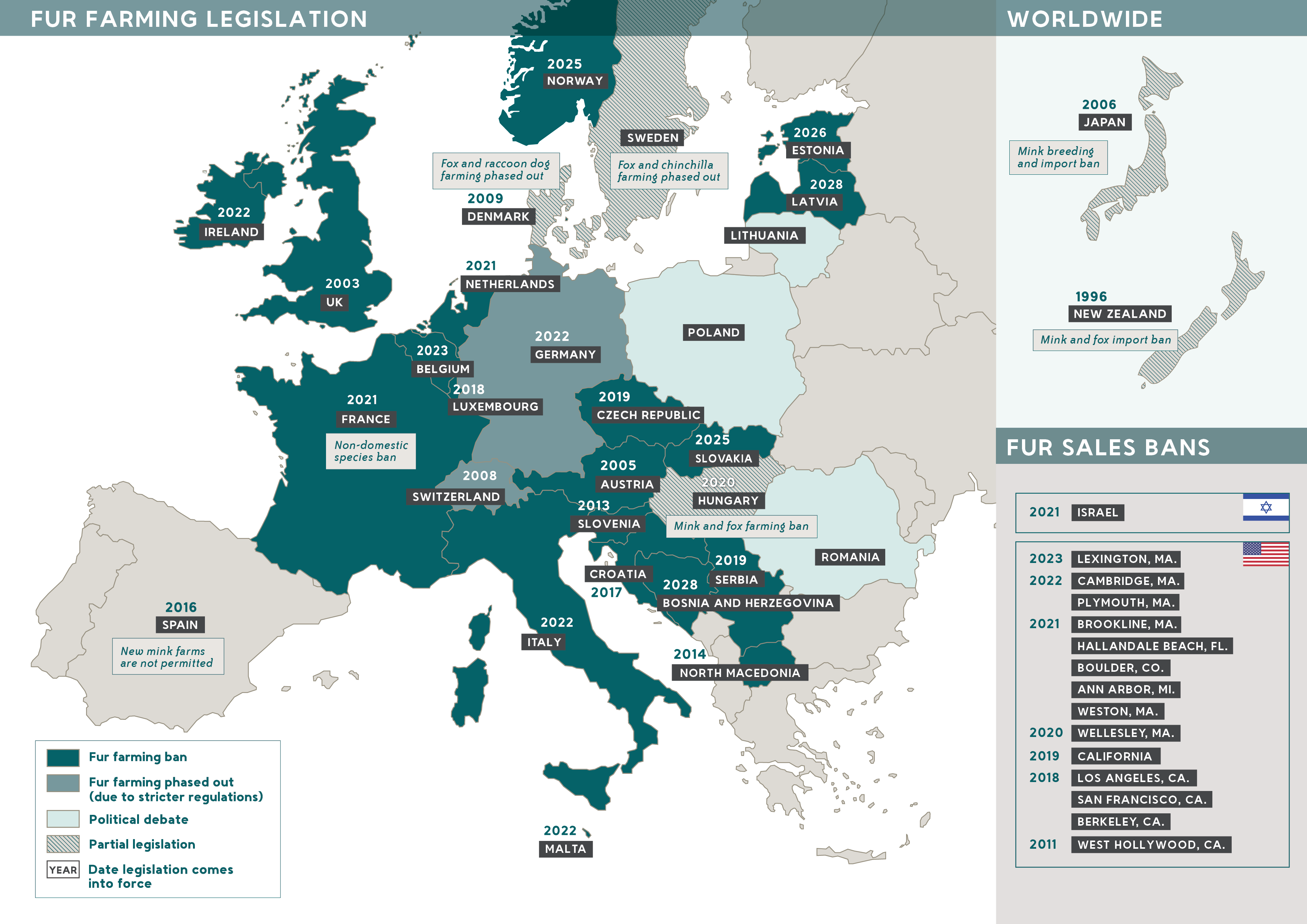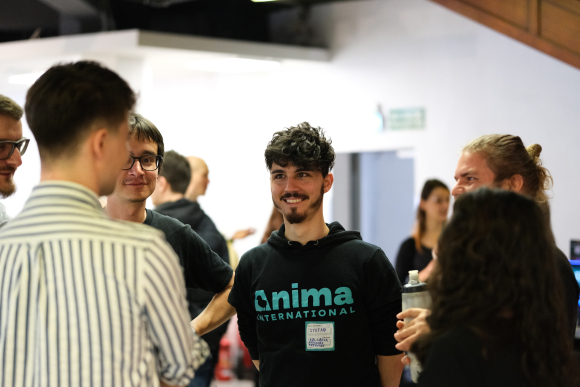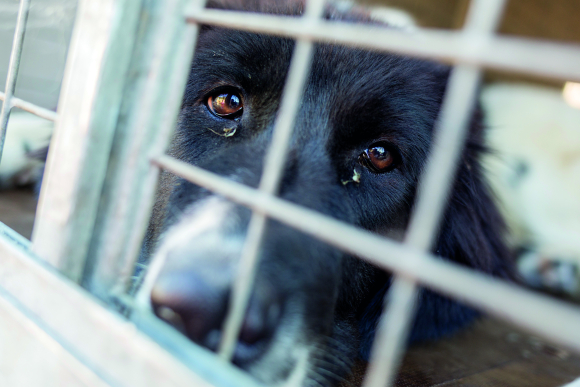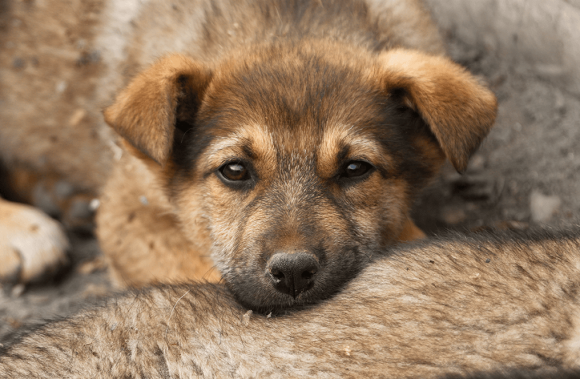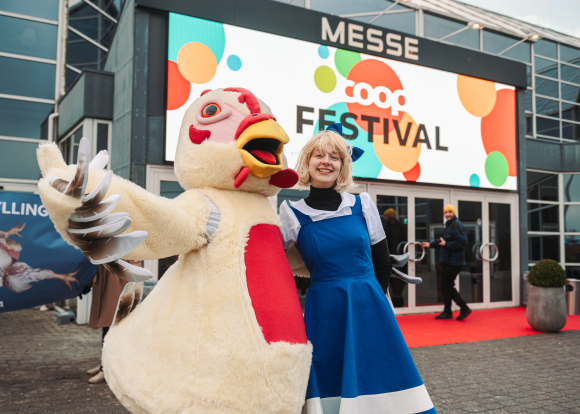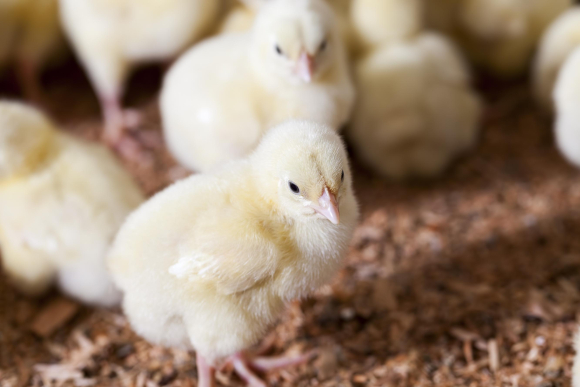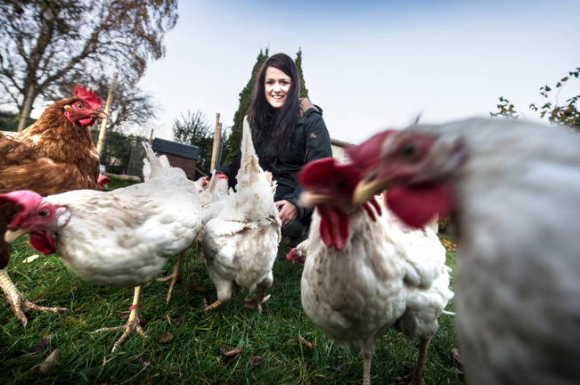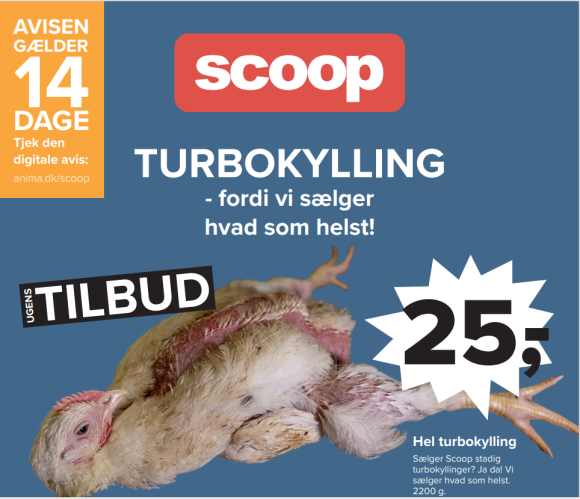Minkavl: Ude af kontrol
Hvad er minken for et dyr?
Mink i naturen er enspændere. De kan holde territorier, der er op til 2,5 km2, som de ikke deler med andre dyr. Minken er et aktivt, nysgerrigt og opfindsomt dyr. De har svømmehud og bruger en stor del af deres tid i vand. Minken jager både til lands og til vands. På pelsfarme lever minken i et lille trådbur med en redekasse. Burenes størrelse svarer til at 2-5 mink lever på en opslået avis.
Minkavlere har gennem mange år stukket verden blår i øjnene, når de hævdede, at dyrene på farmene havde det godt.
Afsløringer på stribe
Anima har i flere omgange kunne dokumentere stærkt kritisable forhold på landets minkfarme. Forhold som offentlige myndigheders kontrol først fandt efter Animas afsløringer, og som medførte lovændringer og bøder til mange avlere. Afsløringerne viste et udbredt problem med skadede mink og generel mistrivsel og forstyrret adfærd hos dyr, der var blevet vanvittige af livet i et bur. Problemerne blev dokumenteret på et stort antal farme hos medlemmerne af pelsavlernes egen bestyrelse. De blev også vist gentagne gange hos de samme avlere. Samlet set viste undersøgelserne og det journalistiske gravearbejde en branche, hvor problemerne er systemiske og ikke skyldes enkelte brodne kar.
Afsløringerne blev bragt i samarbejde med både TV2, DR og en række aviser. Her kan du se billeder af de første afsløringer fra 2009.
Brudte løfter
Efter de første forfærdelige afsløringer af vanrøgte og mishandlede mink i 2009 blev det annonceret, at samtlige farme skulle kontrolleres i 2010. Konklusionen var, at over halvdelen af alle farme stadig bryder reglerne. Alligevel konkluderede fødevareministeren efterfølgende, at problemerne var løst og sagde: “Tidligere kontroller afslørede alvorlige dyrevelfærdsmæssige overtrædelser, og det ser vi ikke mere.”
Men billeder fra 27 farme viser, at der ikke findes en eneste minkfarm i Danmark uden skadede dyr. Det er de alvorlige problemer, der opstår pga dyrenes grundlæggende forhold, hvor aktive rovdyr tvinges til at leve i små trådbure. Ikke alene findes de grove skader overalt, der er også mange af dem.
Ifølge Kopenhagen Fur fandt den officielle kontrol ca. 170 dyr med skader på 693 farme, hvilket svarer til et skadet dyr per 4 farme. Men ved et stikprøvekontrol på 27 farme, blev fundet 60 gange så mange. De dyr, som må leve med smerterne fra enorme åbne sår har ingen glæde af ministerens forsikringer. På en enkelt farm er der mange tusinde dyr, som almindeligevis passes af 2-3 personer. Bruger 2 mand 8 timer på at tilse 15.000 dyr giver det knap 4 sekunder til at se og vurdere det enkelte dyr. Dette vil nødvendigvis betyde, at mange dyr kun sjældent bliver tjekket, og velfærdsproblemer kan udvikle sig.
Her kan du se udvalgte billeder af de opfølgende afsløringer: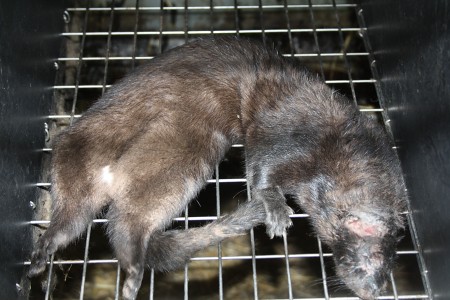
En lukket branche
Efter de mange afsløringer af dyrenes dårlige forhold gik den danske pelsindustri i offensiven. De indrykkede annoncer, der sagde, at selvfølgelig var der skadede dyr, men det var meget få, og skaderne var ikke alvorlige.
Samtidig inviterede de alle til at komme og se en minkfarm. Men åbenheden var aldrig reel, og besøg var kun muligt på særligt udvalgte farme, der var pyntet og poleret til lejligheden.
I et interview med Horsens Folkeblad udtalte avlernes formand Tage Pedersen: »På en åbent hus-dag har vi selvfølgelig ryddet op på farmen. Det tror jeg alle gør, inden der kommer gæster. Men folk er altid velkomne her. Skiltet ude ved vejen, hvor der står: "Kom og besøg min minkfarm" står der hver dag.«
På Fyn fortalte minkavler Jens Arne Bøgelund Christiansen: "Selvfølgelig har dyrene fået lidt ekstra halm i dag, og jeg har også malet og fejet."
Men kunne man så bare komme en anden dag, så man kunne se de almindelige forhold? Det ville TV2s program Razzia gerne, men pludselig var budskabet et noget andet. TV-programmet ville gerne følges med Det veterinære rejsehold, når de lavede kontrol på minkfarme.
Her gav Landbrug & Fødevarer den klare udmelding, at minavlere og andre landmænd skulle smække døren i, når medier bad om at komme indenfor.
Men var medier så heller ikke velkomne hos Tage Pedersen, som han lige sagde?
Åbenbart ikke. Tage Pedersen siger nu »Vi har ikke spor imod de uanmeldte besøg fra rejseholdet, men vi ønsker ikke at bidrage til at underholde samtidig. Vil man besøge en minkfarm, så har vi for eksempel lige holdt åbent hus i maj, og vi er med i Åbent Landbrug i september.”
Man må altså gerne komme, når der er ryddet op, dyrene har fået ekstra halm, og der er malet og fejet. Ellers skal man holde sig langt væk, især hvis man er journalist. Så fik vi vist den på plads.
Se i denne video hvordan det går, når journalister fra Schweiz banker på hos minkfarme i Danmark.
Dyrevelfærdskontrol finder kun toppen af isbjerget
Dyrevelfærden på minkfarme kontrolleres af Fødevarestyrelsen. Men der har i mange år været blæst om kontrollerne. TV-Avisen kunne i 2011 dokumentere, hvordan en farm gik glat igennem kontrollen, men efterfølgende blev der filmet over 100 skadede dyr på samme farm.
På farmene havde kontrollanten kun havde haft 0,5 sekunder til at se hvert enkelt dyr. Altså langt fra lang nok tid til at opdage alle problemer.
Da Anima kiggede nærmere på hvordan kontrollerne foregik, fandt vi bekymrende fejl.
Når en kontrollant ville tale med en dyrlæge for at vurdere et problem, blev de ofte sat i en lang telefonkø sammen med alle almindelige borgere, der ringer til Fødevarestyrelsen. Mange opgav sikkert at ringe.
Når forskellige kontrollanter skulle vurdere det samme problem, så gav det ikke samme resultat. Mange avlere, der har overtrådt loven, er måske sluppet med en advarsel, hvor der faktisk skulle være brugt en skrappere sanktion.
En video optaget af Kopenhagen Fur selv viste, hvordan den slags kan foregå:
Kontrollant: “Hvad med de store hanner her, de hiver også rørene med ind i burene.”
Avler: “Ja nogle af dem gør jo. Der skulle gerne være rør der også, det er der måske ikke. Nå det er der ikke, der skulle ellers være rør i dem alle sammen!”
Kontrollant: “Det er fint, det er fint.”
Kontrollanten ser altså en klar overtrædelse af loven, hvor dyr ikke har rør i deres bure. Men overtrædelse ignoreres uden nogen god grund. Endda foran snurrende kamerarer.
En anden bekymring om kontrollen var, at minkavlere fik lov til at aflive dyr under kontrollen, uden der blev skrevet ned hvorfor. Dyrene har sikkert været i en sørgelig forfatning. Og var kontrollen ikke kommet, så kunne det være fortsat. Altså netop den slags situationer, hvor syge og skadede dyr ikke bliver hjulpet.
Minkavleren Michael Møller blev landskendt, da han i 2009 udtalte til TV2 om sine skadede mink, at han godt vidste det var galt fat, men ikke at medierne ville konfrontere ham. I 2011 afliver Michael Møller 4 mink under et kontrolbesøg og slipper uden anmærkninger. Hvordan mon de dyr faktisk havde det?
Pelsmodstand sejrer
I takt med, at forholdene på pelsfarme er blevet kendt af flere, har mange taget afstand fra industrien. Det har betydet, at økonomien i at avle mink i dag er ringe, og at stadig færre mennesker arbejder med dette. Ifølge uafhængige analyser, er industrien helt uvæsentlig for Danmarks økonomi og kan tænkes at bidrage negativt. Det skyldes at indtjeningen er så lav, at hvis de, som i dag driver minkavl, arbejdede med noget andet, så ville det hjælpe samfundet mere. Et forbud mod minkavl har samtidig en række positive effekter for miljøet. Bl.a. begrænser det forurening og smitte med multiresistente bakterier som MRSA, der var udbredte på minkfarme.
I dag er der ganske få minkfarme i Danmark, da alle mink blev slået ned i forbindelse med corona-pandemien. Opdræt af ræve- og mårhunde er allerede forbudt
Anima har arbejdet internationalt med spørgsmålet om pelsfarme, og i dag har de fleste lande i Europa forbud. I dag arbejder vi både for et forbud i Danmark og EU.
